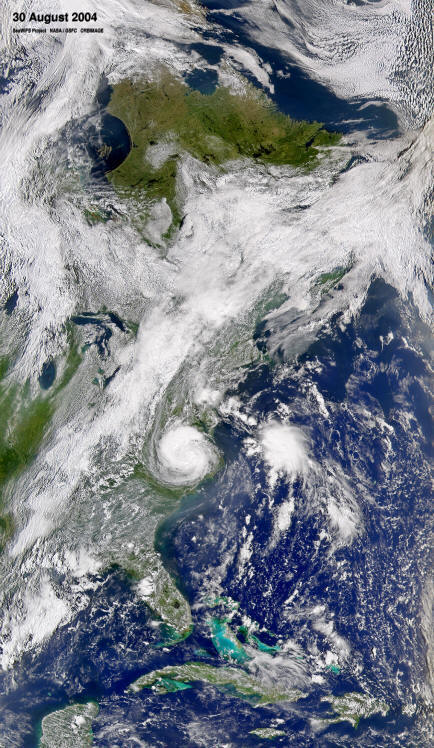
Topic 4:
Global Climate Patterns

| Photo Title: Tropical Depression Gaston and Tropical Storm Hermine |
News of the Day:
Monsoon Season Arrives in the SW!

A spontaneous waterfall, 300 feet tall, forms after a cloud burst south of Bluff. Josh Ewing photo
Thursday September 5, 2013
Photo on front page of “The San Juan Record” from SE Utah region. The rain finally came with a bang on Sunday, August 25th. Rain gauges around the town of Bluff on the San Juan River read between 1.85” to 2.5”! This waterfall was only one of many cascading off the cliffs around town. This one was definitely the most spectacular: fall coming off Casa del Echo Mesa on south side of San Juan River canyon (Navajo side).
Learning Goals for Day:
Ø Be able to:
Ø Generate a list of key ecological constraints at different scales
Ø Understand differences in solar insolation on different parts of the globe
Ø Understand the causes of the seasons
Ø Understand global air and moisture circulation patterns
I. Global Climate Patterns:
A) What are the 4 major components of climate? (abiotic factors)
B) Distribution of Earth's Biomes - What 2 variables explain most of distribution of life on the planet?
Important abiotic factors in explaining differences in vegetation types worldwide:
(...what are they...?)
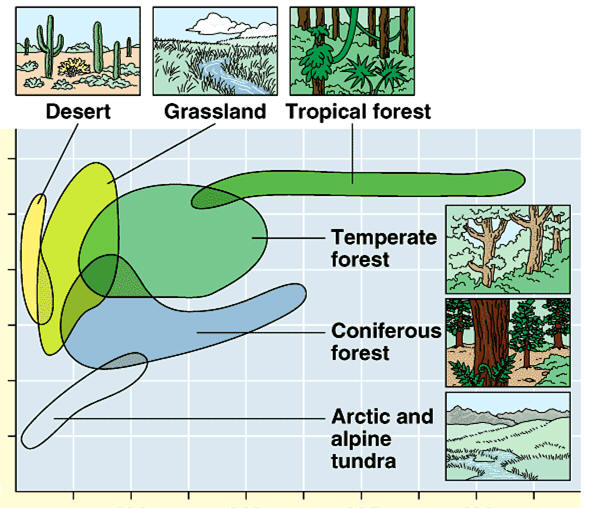
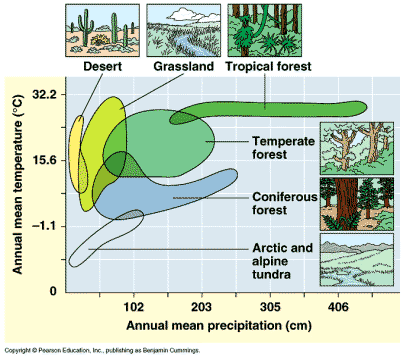
C) Solar Insolation -
1) Do all points on Earth receive the same hours of daylight in a year?
2) Is solar insolation the same over all parts of Earth's surface?
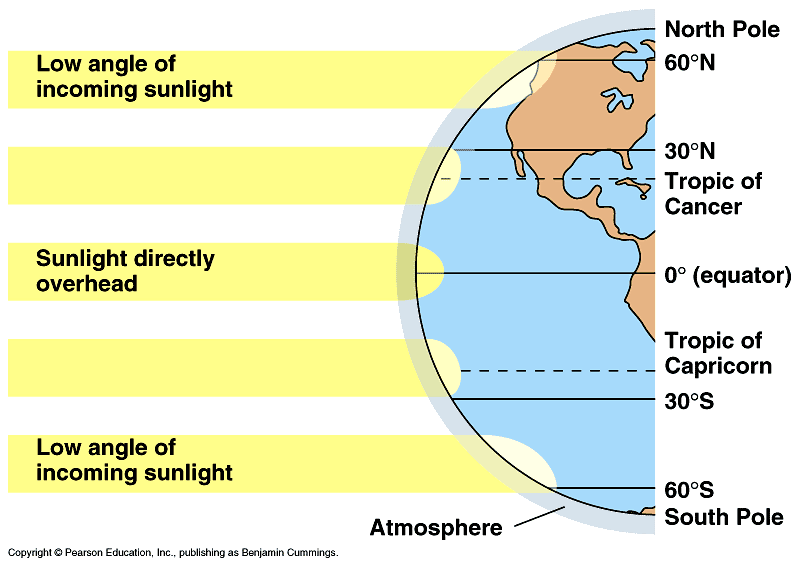
3) What is the significance of these differences in solar insolation?
D) Causes of the Seasons -
What causes the seasons? Use your "models" to demonstrate & explain the creation of seasons with a partner in your group. Show the relative position of Earth & Sun at these different times of the year:
i) June 21 (summer solstice, N hemisphere)
ii) Sept. 21 (autumnal equinox, N hemisphere)
iii) Dec. 21 (winter solstice, N.)
iv) March 21 (spring equinox, N)
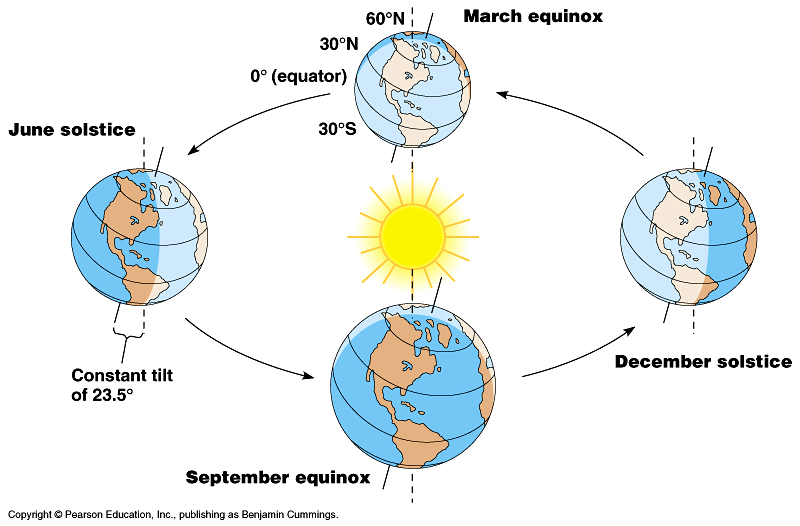
E) Global Circulation -
The significance of differences in solar insolation
1) What is the climate like at the equator, and why?
a) What does warm air do...?
b) What does cool air do...?
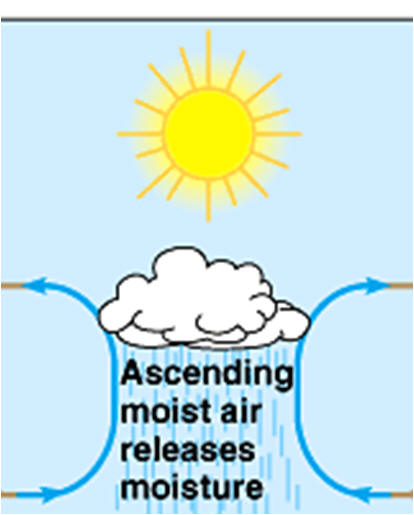

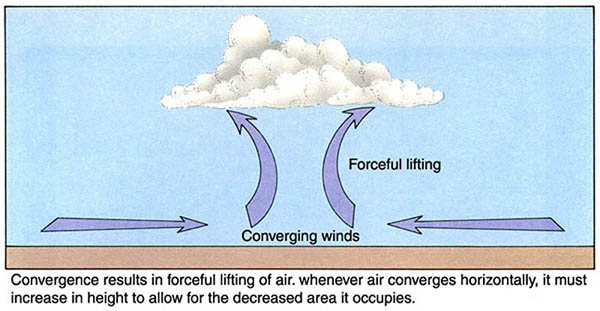
2) What is the climate like at 30o latititude, and why?
Low vs. High Pressure Systems:
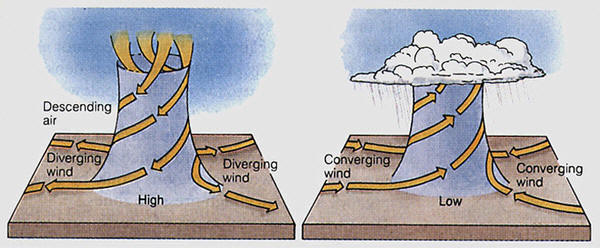
....Where do you find the world's deserts???
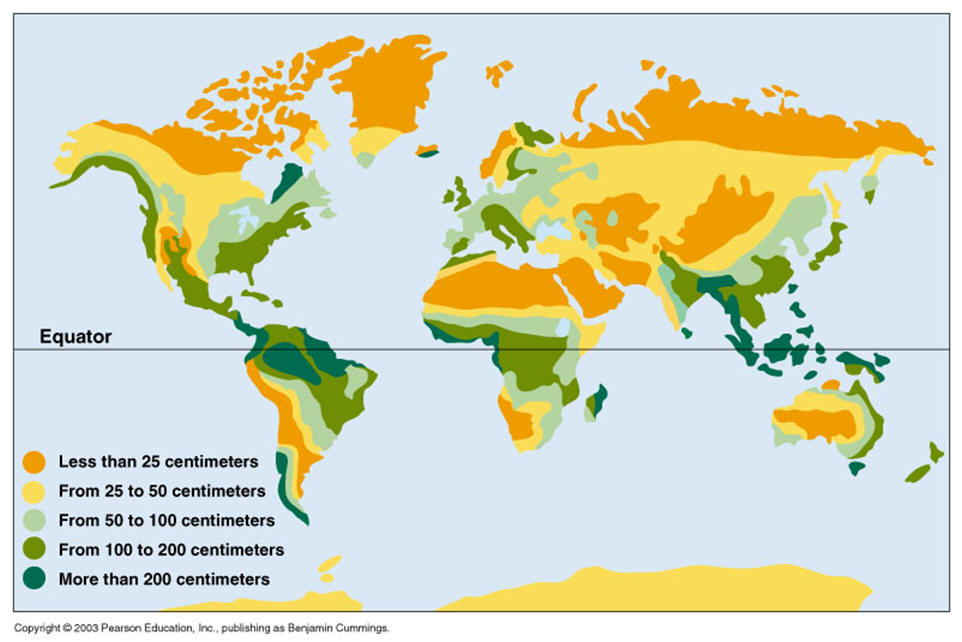
Be able to recreate a diagram showing the air circulation cells and their distribution around the globe.

www.hort.purdue.edu/.../
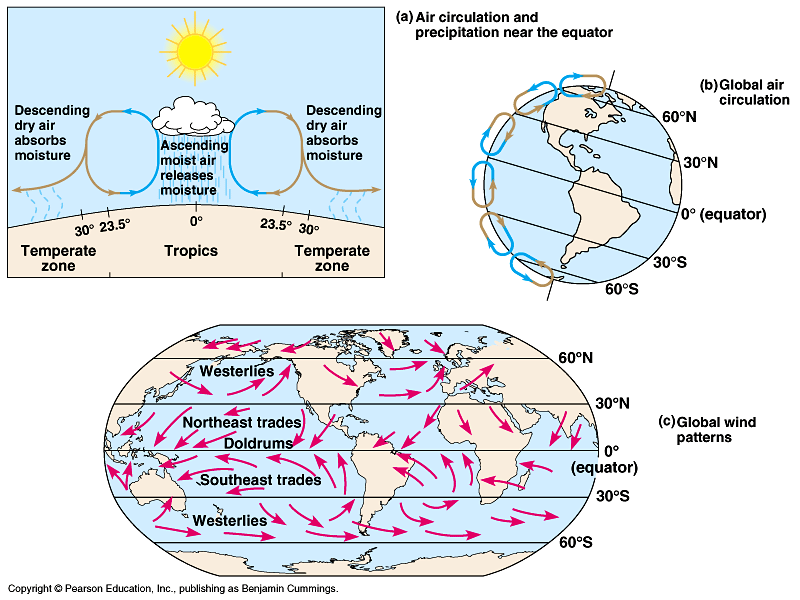
Seasonal movement of the Intertropical Convergence Zone:
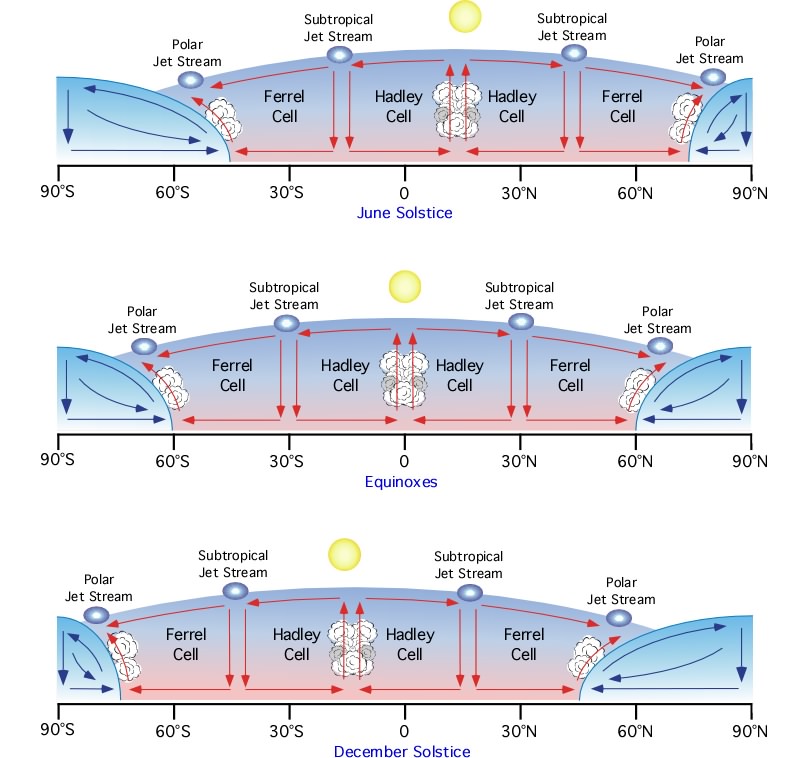
from:
www.physicalgeography.net/
Current climate vs. Past climates
http://www.esrl.noaa.gov/gmd/ccgg/trends/history.html
Assess – Goals (these make REALLY good exam questions!!):
Ø Do all points on the surface of the Earth receive the same number of hours of daylight in one year? the same amount of solar energy input?
Ø Understand how to explain the main causes of the seasons
Ø Why are the tropics wet?
Ø Why are the deserts dry? Where are they located, globally? why?
Ø Draw a diagram of the Earth showing all of the large air circulation cells , and indicating where we find regions of high & low atmospheric pressure, and where it is wet or dry.